A breathtaking medieval monastery and estate that's just half an hour from central London
Penny Churchill takes a look at a remarkable medieval home which has come to the market in Essex: Beeleigh Abbey.
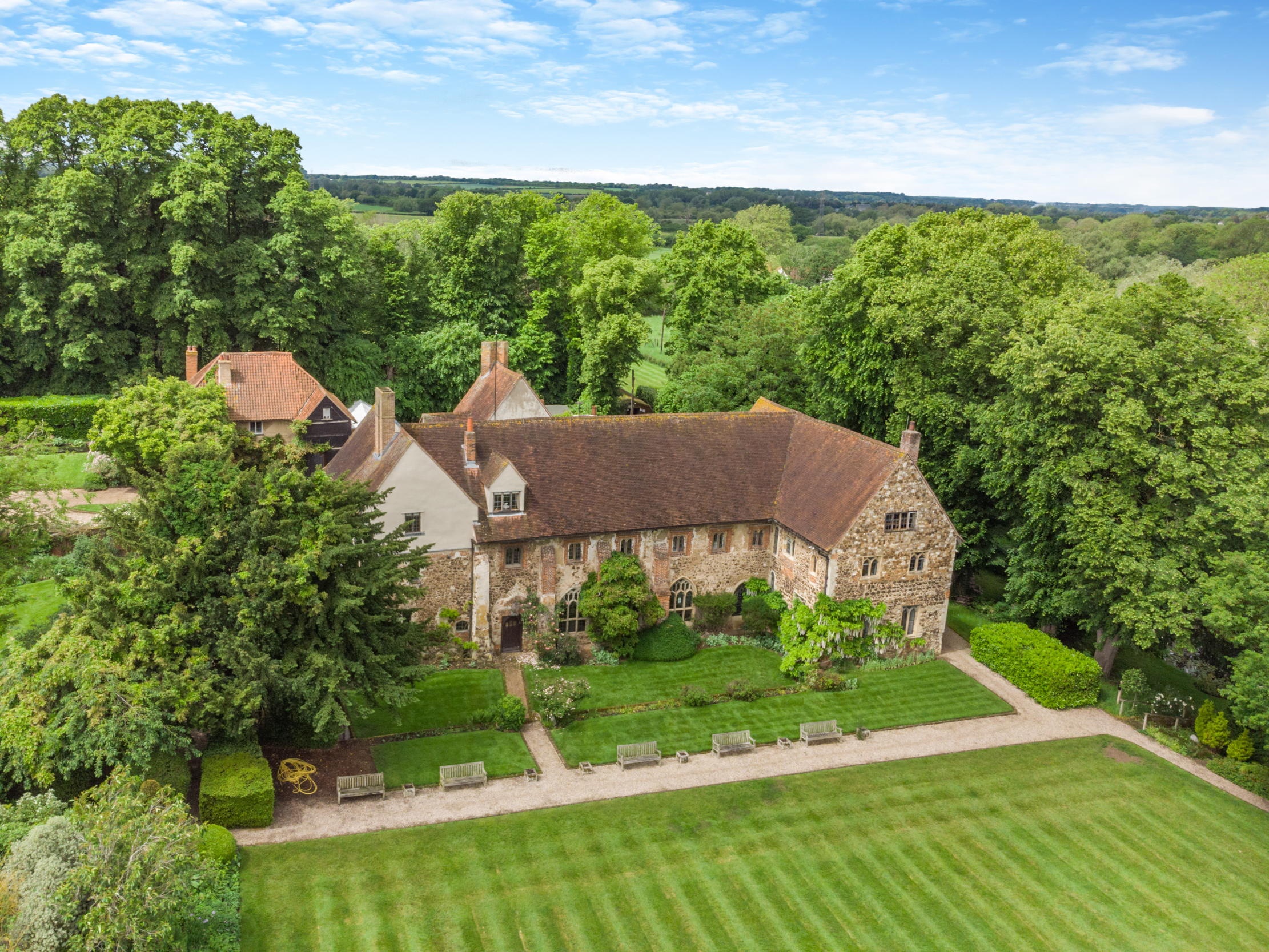

The 850-year-old, Grade I-listed Beeleigh Abbey starred in Country Life’s architecture pages a couple of years ago, with a pair of articles: one on the history of this incredible medieval estate, and a sister article looking at the building’s later years in the custodianship of the Foyle family, of Foyle’s bookshop fame.
Following the death of Chrostopher Foyle a couple of years ago, Beeleigh Abbey is now for sale, along with its associated 366-acre estate beside the River Chelmer, a mile from the market town of Maldon, eight miles from Chelmsford, and 38 miles from central London. Trains to London Liverpool Street take half an hour, making this a medieval monastery from which you can commute.
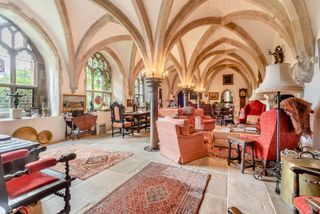
The Chelmsford office of Strutt & Parker and Essex agents Whirledge & Nott quote a guide price of £5.45 million is for the whole, but the estate is also being offered in up to four lots.
The 9,743sq ft main house is on the market at £2.5m. It boasts five reception rooms, six bedrooms and six bathrooms.
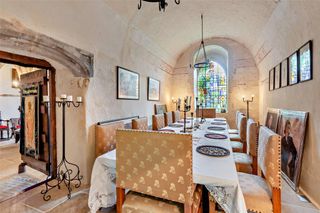
The main house also comes with several outbuildings and a three-bedroom cottage, all set in 35 acres of gardens, grazing, woodland and wetland adjoining the River Chelmer.
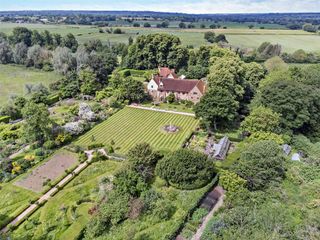
There are also 319 acres of farmland for sale at £2.6m; several farm buildings offered at £200,000; and a former poultry building set in 10¼ acres of farmland, at £150.000.
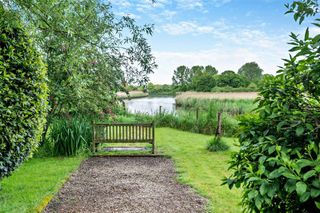
The history here is extraordinary. The Abbey was founded in about 1180 near Maldon, Essex, as a monastery for the Order of Canons Regular of Prémontré in northern France (known as the Premonstratensians or White Canons),
Sign up for the Country Life Newsletter
Exquisite houses, the beauty of Nature, and how to get the most from your life, straight to your inbox.
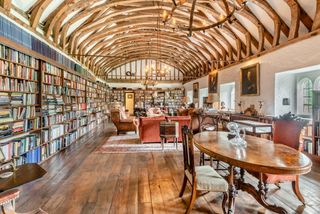
Following the Dissolution, many of the abbey buildings were demolished and, in 1540, Henry VIII granted Beeleigh Abbey and its lands to Sir John Gate, Chancellor of the Duchy of Lancaster, who was later executed for treason for supporting Lady Jane Grey.
In the 18th century, the Abbey was used as a public house, but, by the late 1800s, was in a ruinous state. Restoration of the medieval buildings was begun in 1912 by a Capt Grantham and subsequently by one Richard Edwin Thomas (the story of which was told in Country Life on September 30, 1922).
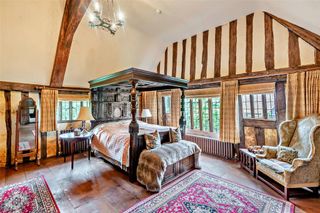
Beeleigh Abbey’s long association with the Foyle family began in 1943, when William Foyle, the co-founder in 1903 of the famous Foyles bookshop in London’s Charing Cross Road, happened upon it when boating on the Chelmer and was immediately captivated by the ancient building and its secluded woodland setting.
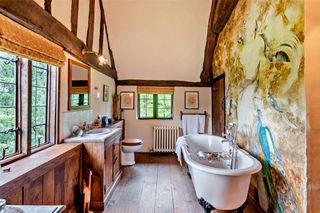
Having acquired the Abbey privately, he used it to house his vast collection of books and lived there until his death in 1963. His daughter, the notoriously autocratic Christina Foyle, inherited both the family business and the Beeleigh estate, where she lived with her army of cats until her own death in 1999.
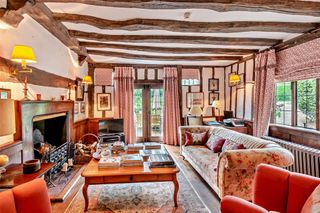
The next owner of Beeleigh was William’s grandson, Christopher Foyle, who acquired it, not through inheritance, but using his own hard-earned cash, his aunt having left the bulk of her £60 million estate to the Foyle charitable foundation.
Foyle had worked for his aunt as a trainee manager in the 1960s, but, seeing little prospect of advancement within the firm and inspired by his love for aviation, he established a small air-taxi service in Luton. This he developed into Air Foyle HeavyLift, a major international freight operation flying mighty Russian Antonov planes capable of carrying anything from tanks and railway locomotives to emergency aid.
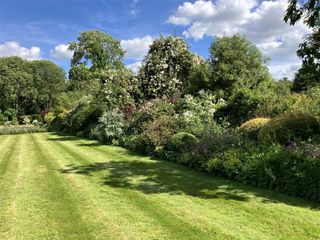
In 2000, he bought Beeleigh Abbey and a small proportion of his grandfather’s extensive library; the rest was sold at a Christie’s auction for £12 million in July that year.
With his wife, Catherine, he embarked on a four-year-long restoration of Beeleigh Abbey, its gardens and grounds, using a specialist team of builders, craftsmen, joiners and engineers. It was a remarkable undertaking that was duly recognised with the Maldon District Council Conservation Award in 2007, the RICS East of England Award in 2008 and the coveted RICS National Award for the best restored and conserved historical building in the whole of the UK.

In the course of the renovation, new plumbing and central-heating systems were installed, the kitchen and bathrooms were upgraded and the library roof was retiled. Many of the upstairs floors were rotten and were replaced with reclaimed Victorian oak timbers. Aged limestone flags were sourced from a French château and laid throughout much of the ground floor.
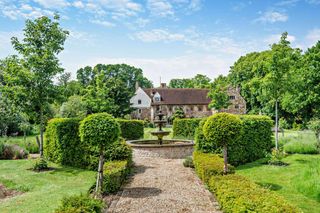
The legacy left by Christina’s cats was systematically eradicated, too, by ripping up floorboards and replacing whole sections of plasterwork. The gardens were rejuvenated with the addition of a large, heated Alitex aluminium greenhouse and lavish planting of trees, shrubs and borders, which, 20 years on, provide a wonderful backdrop to the Abbey’s ancient walls.
Beeleigh Abbey is for sale at £5.45 million — see more pictures and details.
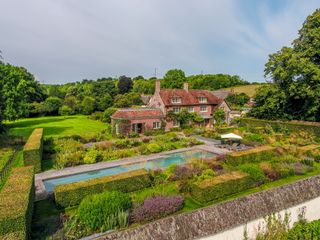
Credit: Strutt and Parker
Best country houses for sale this week
An irresistible West Country cottage and a magnificent Cumbrian country house make our pick of the finest country houses for
-
 If heaven is on earth, it might be in this home with a converted chapel that is now a swimming pool
If heaven is on earth, it might be in this home with a converted chapel that is now a swimming pool5 Wood Barton Town House is part of an exclusive 80-acre development in Devon that also comes with fishing rights on the River Avon and four bedrooms.
By James Fisher Published
-
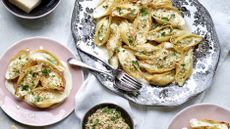 An Italian-inspired recipe for lemon-butter pasta shells with spring greens, ricotta and pangrattato
An Italian-inspired recipe for lemon-butter pasta shells with spring greens, ricotta and pangrattatoSpring greens are just about to come into their own, so our Kitchen Garden columnist reveals exactly what to do with them.
By Melanie Johnson Published
-
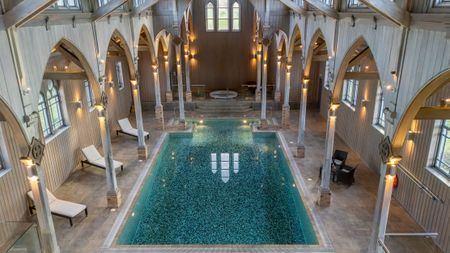 If heaven is on earth, it might be in this home with a converted chapel that is now a swimming pool
If heaven is on earth, it might be in this home with a converted chapel that is now a swimming pool5 Wood Barton Town House is part of an exclusive 80-acre development in Devon that also comes with fishing rights on the River Avon and four bedrooms.
By James Fisher Published
-
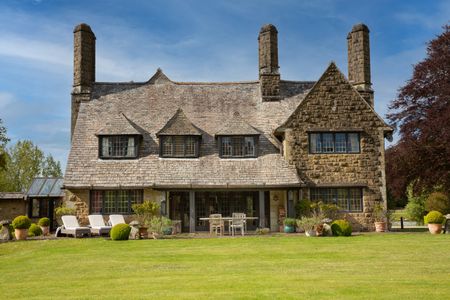 The sounds of spring and stained glass in an Arts-and-Crafts masterpiece in Dorset
The sounds of spring and stained glass in an Arts-and-Crafts masterpiece in DorsetWith 35 acres, more than 10 bedrooms, a swimming pool and tennis court, Winterfield has it all.
By James Fisher Published
-
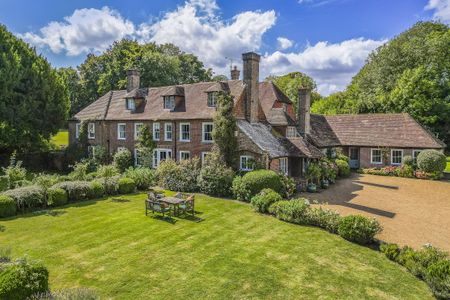 An eight-bedroom wonder in East Sussex where the outdoors are an adventure
An eight-bedroom wonder in East Sussex where the outdoors are an adventureThe interiors of Old Middleton are pretty good too.
By Arabella Youens Published
-
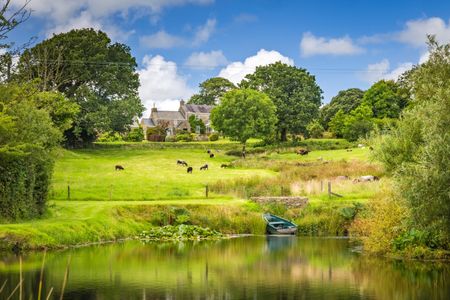 A lakeside farmhouse on the market in the beautiful heart of Pembrokeshire
A lakeside farmhouse on the market in the beautiful heart of PembrokeshireA lake, streams, 15 acres and five bedrooms. Rogershook might have it all.
By James Fisher Published
-
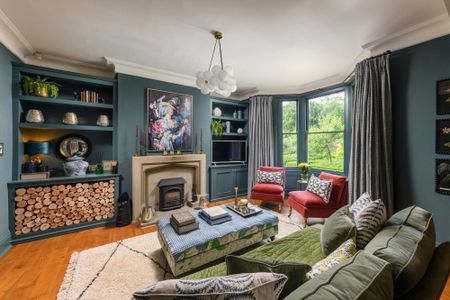 An idyllic countryside home that's light, spacious and comes with a Grade II-listed folly
An idyllic countryside home that's light, spacious and comes with a Grade II-listed follyHagg House is a gorgeous family home that just happens to have a miniature castle in the gardens. Annabel Dixon explains more.
By Annabel Dixon Published
-
 A historic villa for sale on the Via Nomentana worthy of Rome's rich history
A historic villa for sale on the Via Nomentana worthy of Rome's rich historyThree floors, lots of balconies, and a private garden in one of Rome's loveliest neighbourhoods.
By James Fisher Published
-
 Eight bedrooms of unlisted Edwardian elegance with sweeping views of Somerset
Eight bedrooms of unlisted Edwardian elegance with sweeping views of SomersetAshton House sits near the market town of Chard and comes with a wealth of amenities both inside and out.
By Arabella Youens Published
-
 A waterside cottage in Devon with a private quay, idyllic views and the prettiest summerhouse we've seen in years
A waterside cottage in Devon with a private quay, idyllic views and the prettiest summerhouse we've seen in yearsRight beside the picturesque Yealm Estuary, No 1 Noss Mayo is an idyllic home that feels like an escape from the world. Annabel Dixon takes a look.
By Annabel Dixon Last updated

